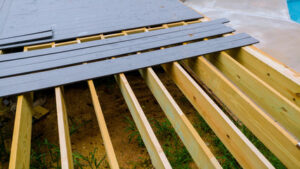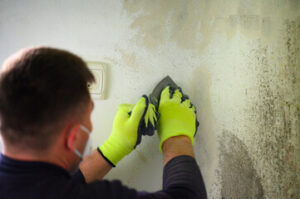The plumbing industry is a large market that can make for a lucrative business. Plumbers are on-call to assist homeowners and businesses with clogs, leaks, and other problems. They also provide specialized installations and maintenance agreements.

A successful Ranger Plumbing Company requires a sound business plan to guide your day-to-day operations. It must include the necessary startup costs and revenue projections. It should also outline your pricing strategy.
Job satisfaction is a key factor in predicting how well an individual adjusts to their work environment. It affects many factors, including mental health and physical functioning. Dissatisfaction can also lead to job loss or even depression and anxiety. Dissatisfaction can also cause problems with relationships and family life. In addition, it can cause serious health problems like heart disease and lung damage. Fortunately, there are ways to improve job satisfaction. One way is to set realistic expectations and goals for yourself. Another way is to find a job that suits your interests and skills.
In this study, we found that global job satisfaction was significantly influenced by the combination of job demands and job resources. The results of the model showed that job satisfaction was lower when an employee felt a high level of stressors, such as a lack of training or equipment to perform their duties. We also found that a lack of control over the day-to-day tasks of the job was related to a low level of satisfaction.
The facets of job satisfaction that had higher contributions to global job satisfaction were ‘interest and skill involved’ and ‘how abilities are used’. These were considered intrinsic factors, and the fact that they were related to the nature of the job itself suggests that these aspects are important for overall satisfaction. The other facets, ‘physical working conditions’ and ‘payment’, were considered extrinsic factors.
Extrinsic job satisfaction is based on the perception of fair and competitively determined pay and benefits. It is also based on a sense of achievement and security. This type of satisfaction can be increased through regular employee appraisals and feedback, which recognize achievements and development areas. It can also be enhanced by positive organisational culture and good management practices.
Physically demanding work
While most people think that plumbing is only about toilet, drain and sink repairs, it is much more than that. Professional plumbers can conduct a thorough inspection of the entire plumbing system to detect all the underlying issues. This saves homeowners from unnecessary expenses, including expensive repair bills. They can also help in saving the property from damages caused by burst pipes and flooding.
Plumbing companies also offer a variety of services to customers such as kitchen and bathroom remodeling, water heater installation, and sewer line repair. They may even install a whole new plumbing system for a home or commercial building. These services require extensive labor and training, so it’s best to hire a qualified plumbing company.
Before starting a plumbing business, it’s important to create a comprehensive plan. This will help you establish your goals, including how to attract and retain customers. It will also help you determine the amount of money you’ll need to launch your business. You can then secure funding from banks, investors, or personal savings.
In addition to a business plan, you’ll need to obtain the proper licenses and permits required to operate in your area. You should also consider the type of business structure you want, such as a sole proprietorship for simplicity or an LLC for liability protection and flexible tax options. A legal advisor can help you select the best option for your business.
A reputable plumbing company offers a quality service at an affordable price and guarantees their work. Their employees are trained to follow building codes and regulations when installing plumbing systems. They are also conversant with the latest technology and can handle all kinds of installations. They are reliable, friendly and treat their clients with courtesy and respect.
Reliability
A reliable plumbing company is essential to ensure that your home or office’s water system remains in working order. These professionals are licensed and insured to provide you with quality service. They can assist with drain repairs, pipe bursts, and clogging issues. They also perform regular inspections to prevent major damage. You should choose a company that has a strong reputation and a solid track record.
Reliability is a key factor in any job, and it can set you apart from your competition. It is the ability to meet or exceed expectations and deliver results consistently. You can showcase your reliability skills in your resume by highlighting examples of projects that you have completed on time. You can also describe how you have managed to maintain high standards during challenging times.
If you’re searching for a reliable plumber, look for one with a great customer service mindset. This will ensure that you’re satisfied with their work and that they respond quickly to any questions. Also, check whether they have a general liability insurance and workers’ compensation insurance. These policies are vital for any business owner, and they can save you money in the long run.
You can find a reliable local plumber by asking for referrals from friends, family, and colleagues. Also, search online for customer reviews. You can get a good idea of how reliable a plumber is by reading their reviews. Look for positive and negative comments, as well as any recurring themes. Lastly, choose a plumber with a solid customer service reputation and reasonable pricing. This will help you avoid costly repairs in the future.
Flexibility
Flexibility is the ability to adapt and respond to changing circumstances. It also allows you to manage your time and work more effectively. This can improve your job satisfaction and productivity. To develop flexibility, try to focus on the positive aspects of your current situation and make adjustments if necessary.
For example, if you need to rework your schedule, try to take on more projects or work on the weekend. This will help you build a better work-life balance and increase your confidence in your ability to handle new situations. In addition, it will help you develop your problem-solving skills. Being flexible also means that you can adjust your strategies and tactics to meet the needs of your customers. This will enable you to build trust and loyalty with your clients.
Starting a plumbing business requires significant financial commitments. You may need to borrow money from a bank or investors, or even dip into your personal savings. To avoid these risks, you should draft a business plan that includes startup costs and revenue projections. It should also outline team roles, certifications, and marketing strategies.
When starting a plumbing company, you need to identify your target market. You will need to consider whether your focus is on homeowners or businesses. Homeowners need assistance with common plumbing problems, while businesses need specialized installations and maintenance agreements. You should also determine how much you will charge for each service.
To establish the best business model for your plumbing company, you should consult with a legal professional. Options include a sole proprietorship for simplicity, an LLC to protect your personal assets, or a corporation for robust liability protection.
Work environment
Plumbing is a demanding career that requires strong physical strength and dexterity. It also demands the ability to analyze and troubleshoot plumbing problems. It is essential for plumbers to be able to follow industry standards and regulations, as well as work safely. A good working environment can help to increase productivity and job satisfaction. This is especially true when employees are able to organize their work areas and have clear goals and processes in place. In addition, good organizational systems can make it easier to train and onboard new employees.
The work environment for plumbers can vary significantly depending on the type of project or client they are working with. Commercial plumbers may need to work in a variety of different environments, including office buildings, hospitals, and industrial facilities. In some cases, plumbers will need to collaborate with architects or construction teams to ensure that the plumbing is properly integrated into the overall building infrastructure.
Some jobs may require plumbers to crawl under houses or work in tight spaces, which can be physically challenging and exhausting. They also need to be able to climb ladders and lift heavy objects. In addition, plumbers must be comfortable with a variety of tools and equipment. A successful plumber will be able to adapt to changing conditions and find solutions quickly.
During the interview process, a plumber should be able to explain their background, technical skills, and customer service abilities. They should be able to answer questions about their salary expectations, benefits, and growth aspirations. They should also be able to describe how they have worked as part of a team. In addition, a good plumber will be able to describe their knowledge of various pipe materials and demonstrate their ability to work safely in a hazardous environment.


